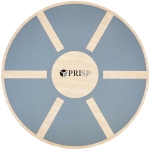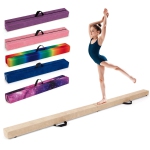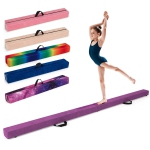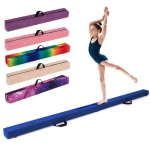How to Wobble Your Way to Core Strength with Balance Boards and Disks
Any physiotherapist will tell you that a strong core is the key to a strong body. Your core is what holds your entire body together, coordinating your movements and keeping your footing firm. Without a strong core, you won’t be able to run, lift, balance, or even squat properly—no matter how big your biceps are, or how many times you do leg day every week!
What are Balancing Boards Great for?
Balancing boards and disks are a great way to build balance, dexterity, and strength. Designed to be used as part of an exercise regimen in a variety of orientations, balancing boards essentially wobble in order to force your body to stabilize itself. They work out your legs, core, and joints.
With better core strength comes better balance. Each tiny de-stabilization of a balancing board gets your body more used to readjusting itself, increasing dexterity at the same time. Balancing boards will even improve your posture over time, setting your centre of gravity lower and enhancing your proprioceptive abilities. (That is, increasing your body’s ability to know how it exists and moves in space.)
Balance board workouts are great for building strong muscles, and they excel at re-introducing strength and mobility to joints after an injury. Specialized designs also come tailored to help you with balance for board sports.
What’s the Difference Between Balancing Boards and Balancing Disks?
Balance boards, wobble boards, Bosu balls, and balancing disks are all pretty much the same thing. They typically have one flat and one domed side: balance boards may be circular or rectangular, with a small dome in the centre; balancing disks are circular, with a small dome; and so forth. Many are available in sets, so you can customize your workout regimen over time.
Bosu (or BOSU) balls, however, are a little different. Their rubbery dome has the same diameter as the ball’s flat side, so it looks like a segment of an exercise ball rather than a segment of a sphere attached to a larger board. They’re the most popular form of balancing board, and are a common tool seen in physiotherapy offices.
Unlike most balancing boards and disks, which face only one direction, the Bosu ball’s large rubber ball means that it can be used facing up or down. This allows you to balance on either the rocking flat side or the inflated dome segment, adding difficulty to simple exercises and providing you with the stability and stretching benefits of a stability ball—but at a fraction of the size.
Look to balancing boards, Bosu balls, and more for a fresh way to exercise, heal, and keep up your activity levels as you age.







